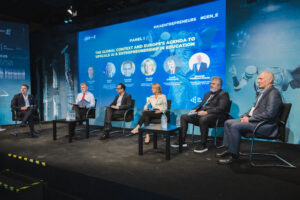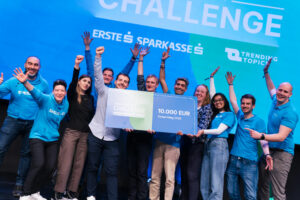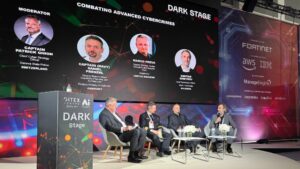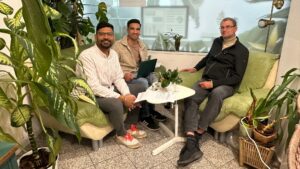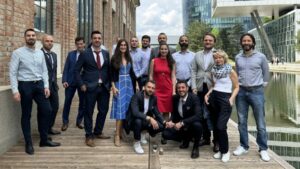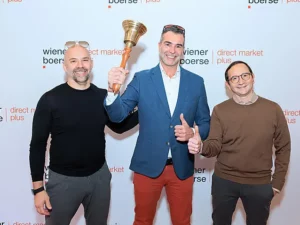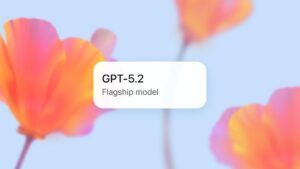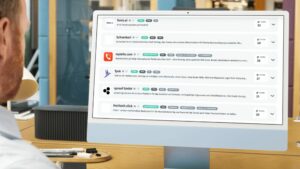“Software is Not a Moat Anymore”

Cursor, Replit, Windsurf and co: If today, in year 3 after ChatGPT, large parts of code can already be written in software from LLMs – how does this change the software business itself? Today, software start-ups are considered easier to copy than ever before and have to be able to show their investors something more than just good code. But what is it exactly?
Investor Konstantin Vinogradov has been thinking about this for some time. At the WeAreDevelopers conference in Berlin, he spoke to Trending Topics about open source, LLMs and the famous ‘moat’ – the moat around software business models that is able to fend off the competition.
Trending Topics: Could you please introduce yourself and your role at the company?
Konstantin Vinogradov: I’m General Partner at Runa Capital. We’re a venture firm focused on early-stage investments in the United States and Europe, specializing in enterprise tech since 2010. I particularly focus on open source tools, infrastructure, software, and of course AI – though I think it’s very hard to find a VC now who doesn’t do AI, so that’s perhaps the boring part of my focus.
Where is Runa Capital based?
We’re incorporated with headquarters in Luxembourg, but we’re pretty decentralized. We have two partners based on the West Coast in the United States, two others based in Luxembourg and Berlin, and I’m living in London.
What are the gems in your portfolio?
The biggest gem in our portfolio is actually a German company called Mambu, a cloud banking platform. We were one of the first investors in Mambu back in 2012, and their most recent round was at a $5.5 billion valuation. You can imagine that in 2012, valuations were not very high stage.
Overall, we’ve invested in more than a hundred companies to date in open source and AI. We had a very successful exit with Nginx, the web server that now powers around 60% of websites in the world. It was acquired by F5 Networks for $700 million. We’re also an investor in n8n, and we were one of the first investors in their seed round alongside Sequoia and Firstminute Capital.
The most interesting gems are our recent deals, but we need to give them time to grow.
What’s the state of open source? We’ve seen some companies coming forward with open source models, but closed source still has much bigger market share. How do you think about it?
Open source has been around since 1998, and I’ve also been around since 2012-2013. With ChatGPT, a lot of things have changed and AI has become more popular. It’s interesting how AI affects open source and open source affects AI, and there’s this intersection called open source AI.
AI, especially AI-based code generators like different AI-enabled IDEs such as Cursor and Copilot, have made software not a moat anymore. In the past, software was valuable IP and there were a lot of B2B startups using this to differentiate from competitors and create moats. Now it’s not a moat – everything can be copied very quickly.
What’s interesting about open source is that it has been living in this paradigm where software is not a moat from the very beginning. In the open source world, people can just copy everything with one click of the “fork” button on GitHub. Yet I’ve found at least 50 open source unicorns founded in the last 20 years, and roughly half of them are from Europe. So even when software is not a moat, you can still build valuable companies. People in open source know how to do this, and I think this will continue to be the case.
For foundational models, we started with closed models like OpenAI and Anthropic. After the amazing launch of ChatGPT, we’ve seen open source models emerge like Llama from Meta, DeepSeek, and others.
Would you consider Llama really open source? Some people say it’s not.
I have a very pragmatic view on this. There’s a strict definition of open source software – it’s a set of software licenses approved by the Open Source Initiative. But there’s no strict definition of open source companies, and the Open Source Initiative is still trying to define open source AI models. There are debates about this, and we just have a draft.
I would call companies open source if they resemble open source, even if they have closed weights or source-available licenses. Llama is source-available, not open source in the strict sense, but it started with an open source playbook to build valuable companies.
What’s amazing is how close open source and closed source foundational models are. In the past, there was usually a huge gap between open source and closed source software for different types of infrastructure. For foundational models, we see that the gap is very small, and that’s changing the market and making foundational models commodities.
I think Meta was extremely smart with what they did. I imagine Mark Zuckerberg looked at ChatGPT – the fastest-growing B2C product in the world – and realized that in the future, people will talk more with agents than with other people. Meta’s whole business is based on people communicating with each other. When you see a huge player emerging based on closed source AI and you can’t create a direct competitor, the only thing you can do is try to disrupt this monopoly early. The best way to do that is to release open source AI, so a lot of other people will use it and there won’t be a winner-takes-all situation.
You mentioned that software’s not a moat anymore because it can be copied in seconds or minutes. What is the moat for software companies then?
I would define moats as things you don’t have AI copilots for – things like open source community, ecosystem, and brand. These can’t be copied easily. You could copy software like ClickHouse database, but you can’t recreate the ecosystem and trust behind that database. That’s the moat.
The next generation of startups will be built around creating valuable open source systems where people are ready to contribute and use them, and they trust that there are no issues. This is a very subtle cultural and political thing. Even if somebody creates AI agents that could copy these subtle aspects, they’ll probably use those agents to win elections, not to copy open source communities.
As an investor, what points do you look for when you want to invest? How can businesses be sustainable without always having the danger of being copied?
Open source is not a business model, but there are business models heavily used in open source. One is called open core – you create a free open source core, make it as widespread as possible, then build proprietary things on top and sell them to people deploying the open source in production. It’s like a freemium model.
Developers play with open source to solve their own problems. When they want to deploy in large enterprise production, they need additional features like advanced security, audit logs, single sign-on – things not required for pilot projects. This is where you make money from your open source software.
There’s also the additional angle of sovereign clouds and GDPR. People want to own their data and run things on their own infrastructure. Open source is valuable here, and people don’t want to pay crazy amounts for public cloud sometimes.
Another model is traditional B2B SaaS – providing open source as a service plus additional enterprise features. This commercializes not just 10% of the codebase (enterprise features) but 100%. This is the main driver of the largest public open source companies like MongoDB and Elastic.
Looking to the near future, how will the startup ecosystem in Europe evolve? Many companies are becoming dependent on three or four AI models from the United States. Will this continue, or will there be ecosystems around European players like Mistral?
I think there will be more ecosystems built around open source AI like Llama and other models. The beauty of open source is that it can be built everywhere, not only in Europe, and Europe can leverage this.
There will be different layers of models. We have foundational models that embed general knowledge about the world, which is a great foundational layer. Then we need specialized models for specific industries, and models that use these layers for specific countries or enterprises. It’ll be a mix of models built around each other.
Infrastructure tech is bottom-up, so the lowest levels are open source – like Linux for operating systems. I think eventually we’ll see the foundational layer mostly open source in AI. New layers will also have significant open source components, and the share of open source will decline closer to the surface, with mostly proprietary layers on top.
Many investors are looking for AI-native companies. What is a real AI-native company for you, apart from being founded after ChatGPT’s launch?
I would call them AI-aware rather than AI-native. AI is just another set of technologies that’s fast-growing and promising, but at the end of the day, when building B2B software companies, you need to solve business problems. You could use AI or something else.
Things that aren’t changing: people still need software that increases revenues or decreases operational costs for businesses. It can be done with or without AI.
The most interesting companies know how to use AI in the grand scheme of things, but they still focus on solving business problems efficiently. They’re definitely data-centric and might be using AI heavily internally or externally.
For example, one of my portfolio companies is Twenty, an open source CRM from Paris. They’re building a competitor to Salesforce because large players like Salesforce, SAP, and Oracle started as business applications but became infrastructure platforms. Twenty is doing for Salesforce what Odoo did for SAP – building an open source alternative.
You won’t find many AI mentions on Twenty’s website right now, but it’s very data-centric and data-driven. There will be AI everywhere eventually, but you need to build the system of record first and the right tooling for workflows. Then you’ll have AI everywhere – analyzing data, manipulating data.
There’s no clear border between AI-native and non-AI-native. There are companies building software the right way where AI is everywhere, and there are legacy companies that made design decisions in the pre-AI era and are trying to adapt now.





